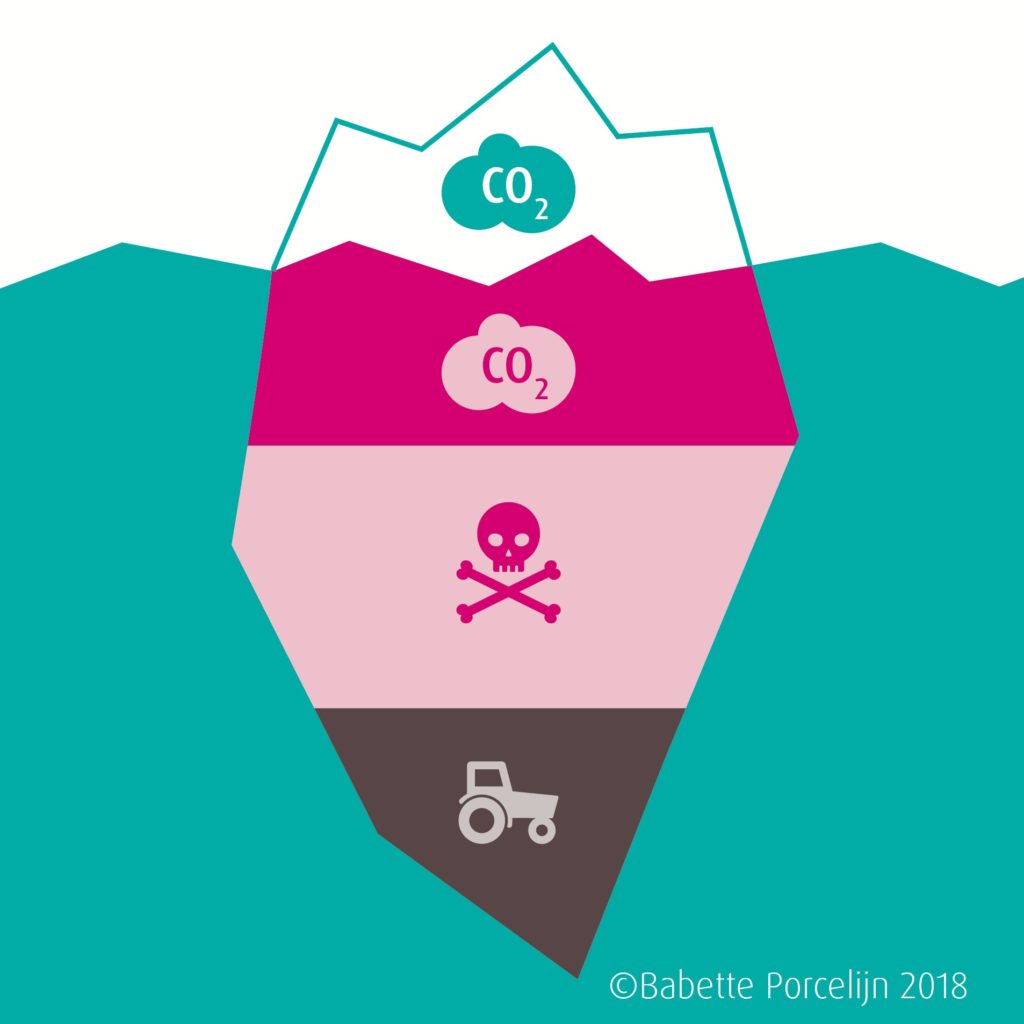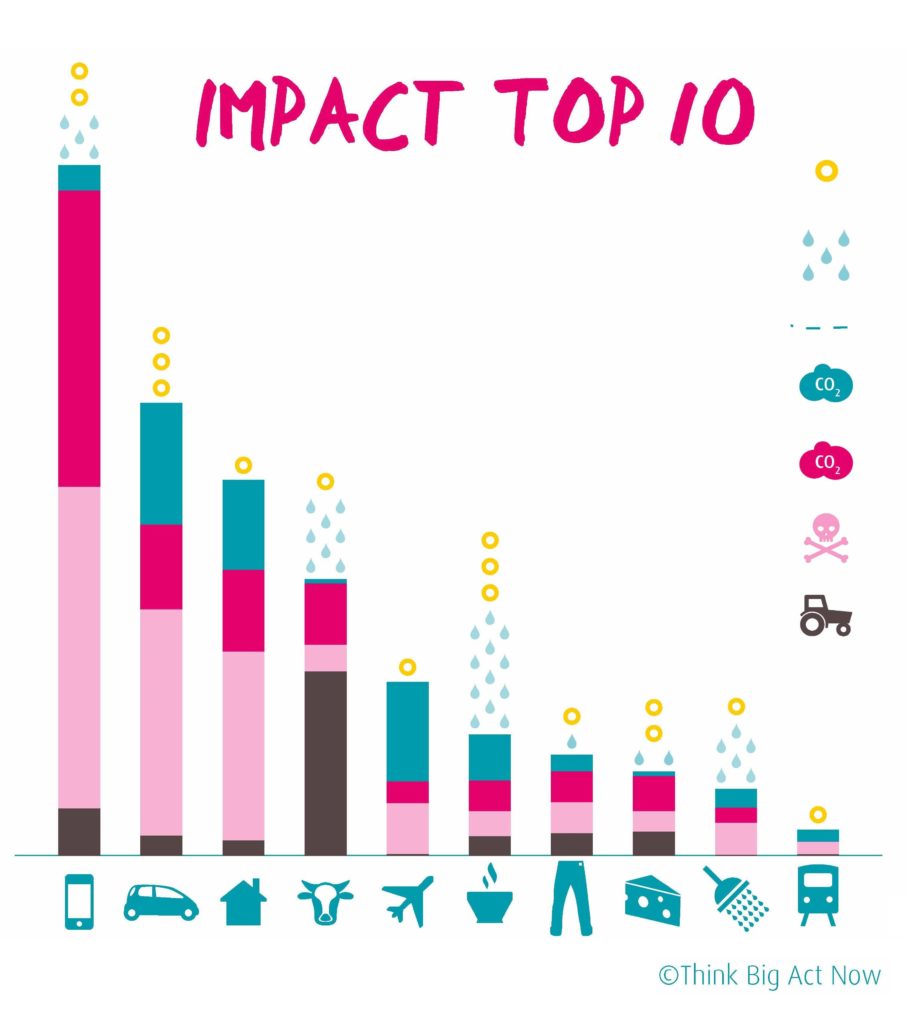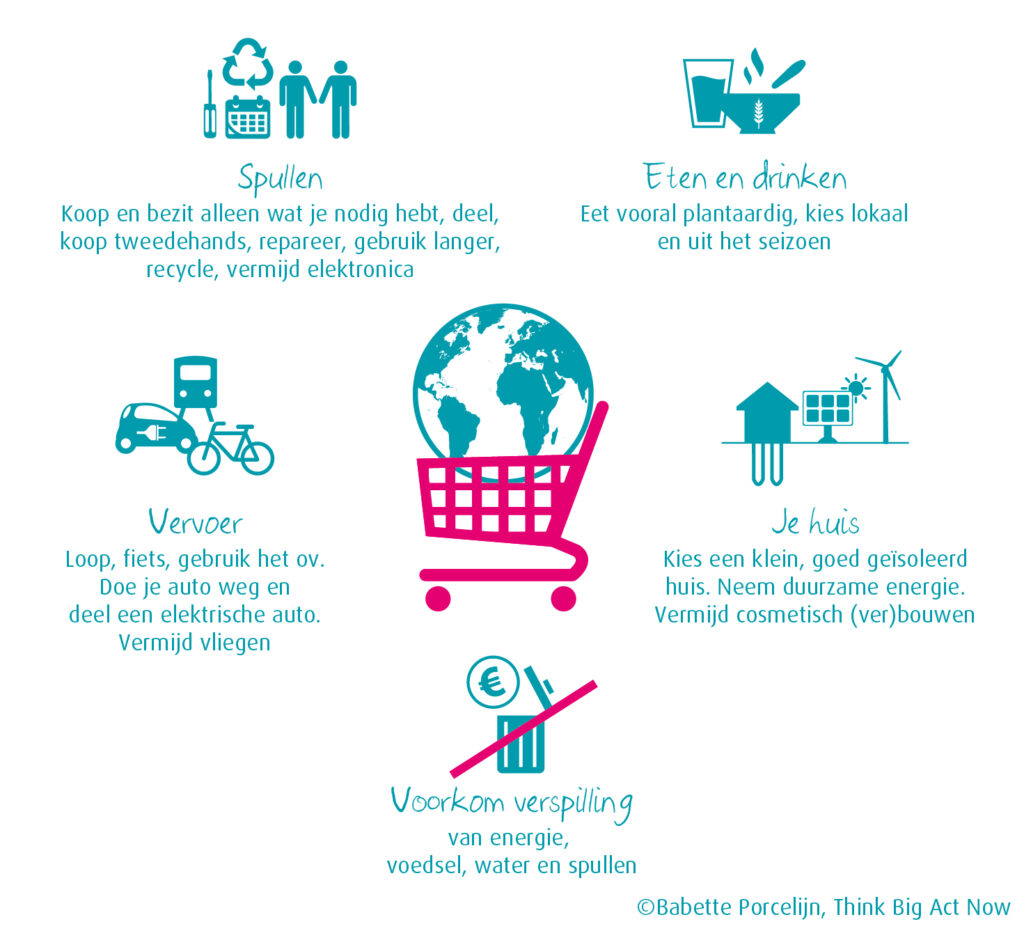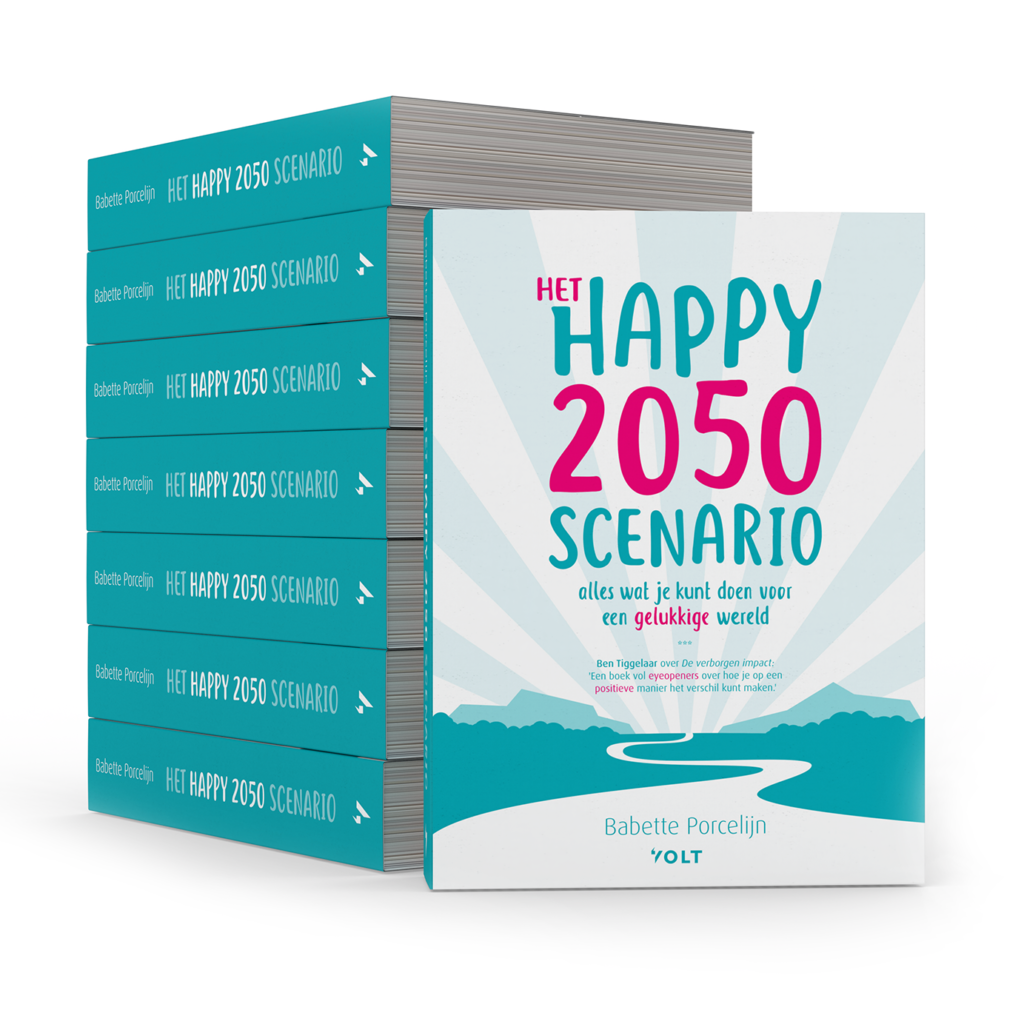The top 10 shows us where we cause most of our impact. But more importantly, it also shows us what we can best work with if we want to become more sustainable.
It turns out that the average Dutchman’s stuff is number 1 in the Impact Top 10. Our car takes up number 2. Thereafter come the impacts of our housing and eating meat and fish. At number 5, there’s flying and at number 6, all food except meat, dairy and eggs, is listed, meaning vegetable food and drinks. After that, clothing and textiles, dairy and eggs, personal care in the bathroom and public transport, being the smallest of the impact top 10.
In the spring of 2020 research bureau CE Delft re-examined the top 10 categories. The new data has caused a number of shifts compared to the previous impact top 10. The top 10 shown on the right and described above is the most recent version (2020).
Would you like to know more about the top 10? Let us know if you have any questions via info@thinkbigactnow.org.
You can download the report that CE Delft created in 2018 for The Hidden Impact regarding the average Frenchmen here (in English).
Calculate your own Impact Top 10



